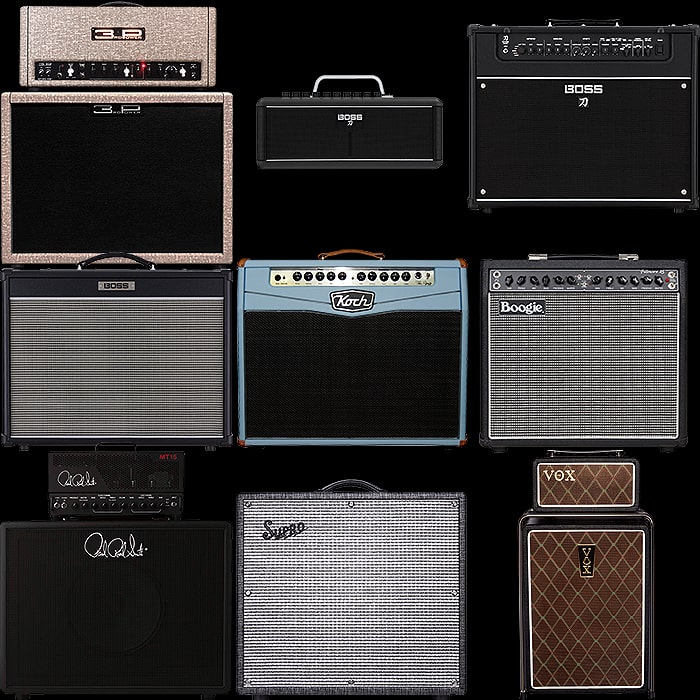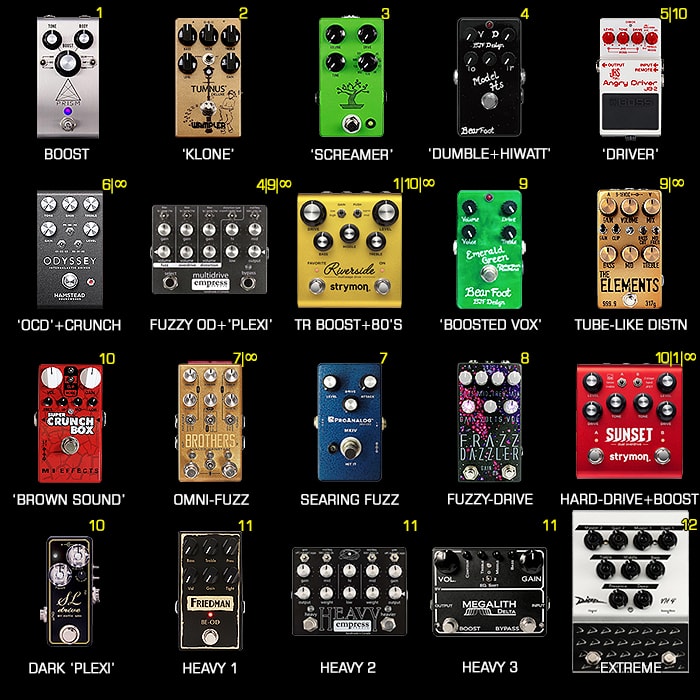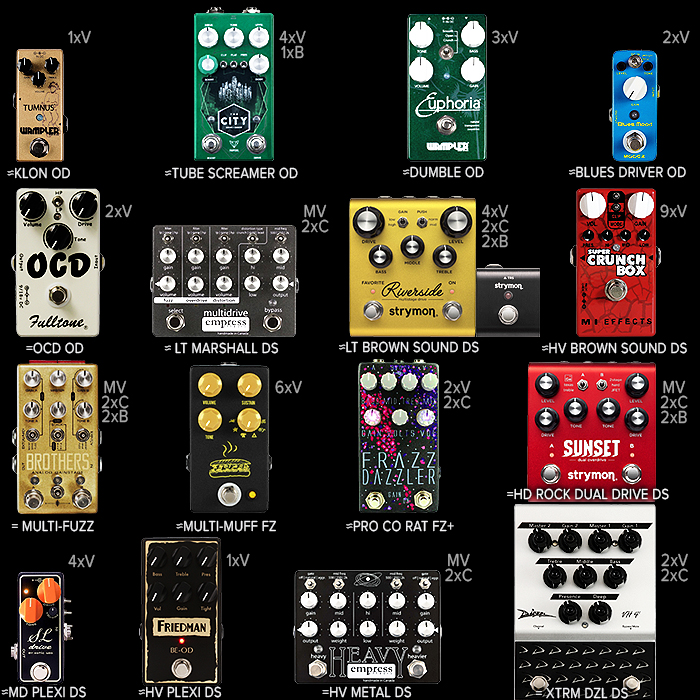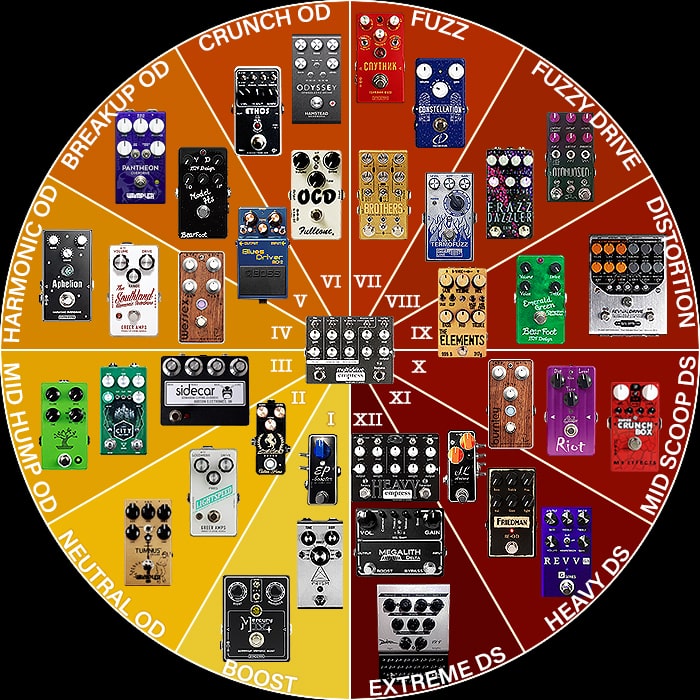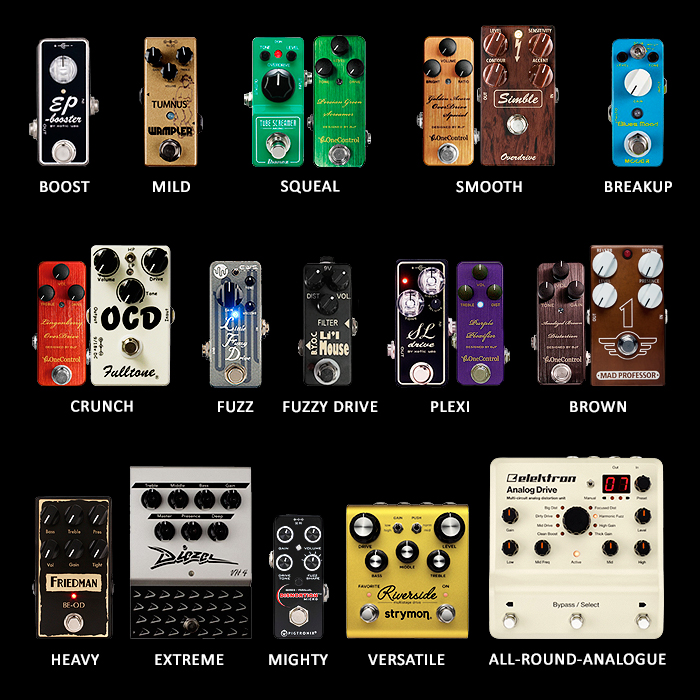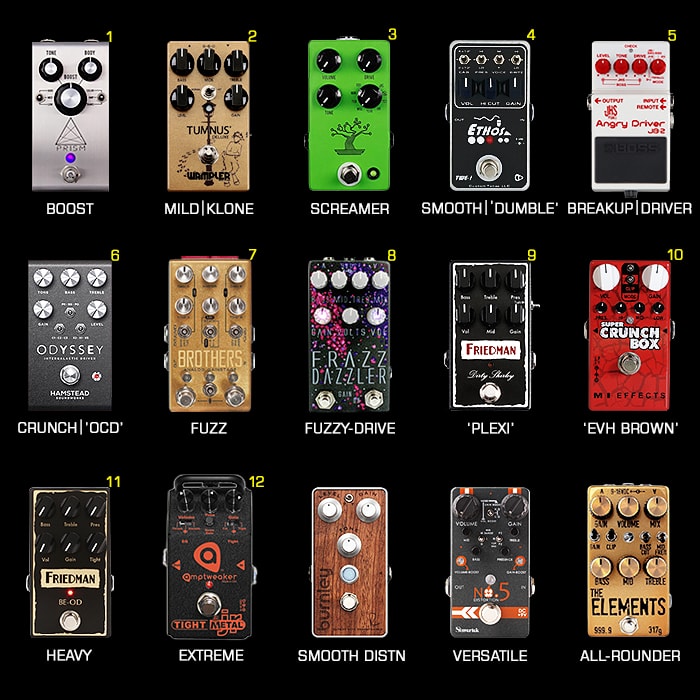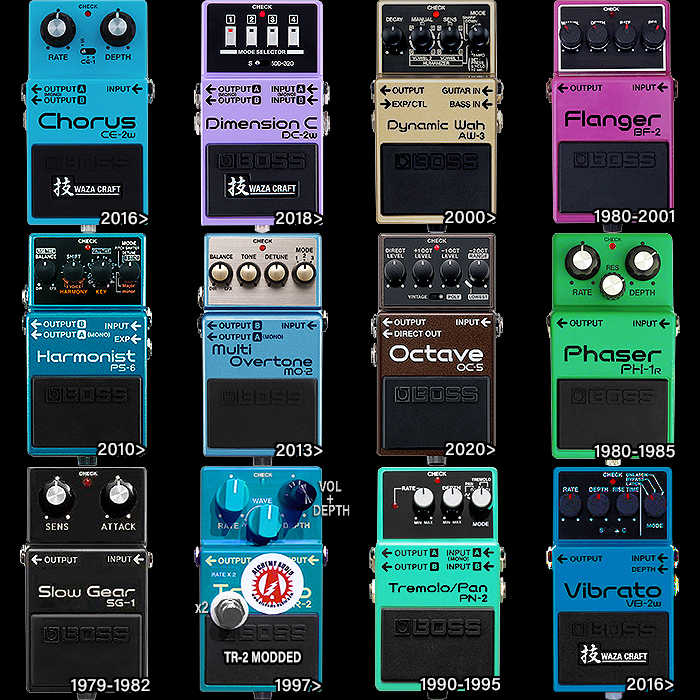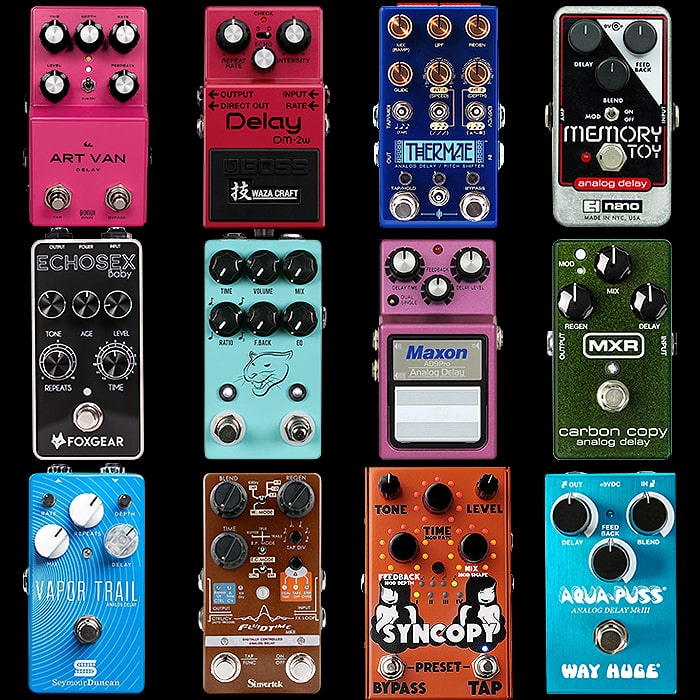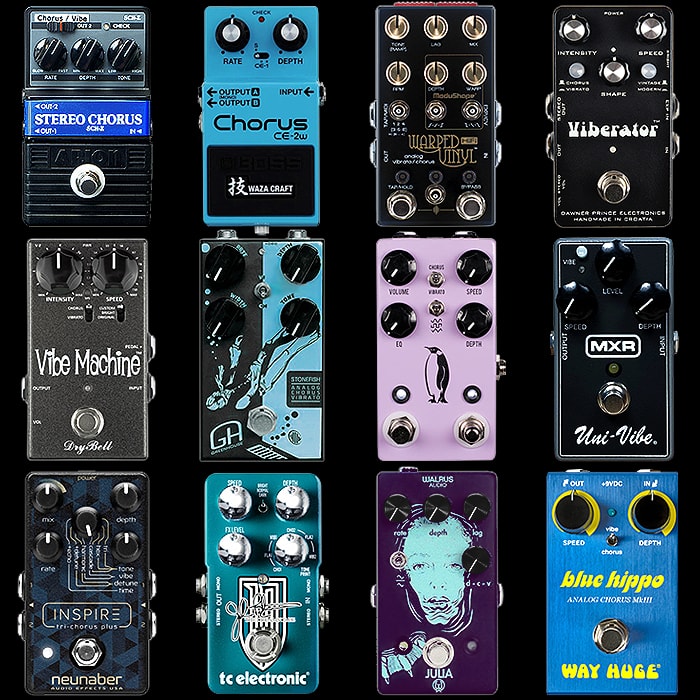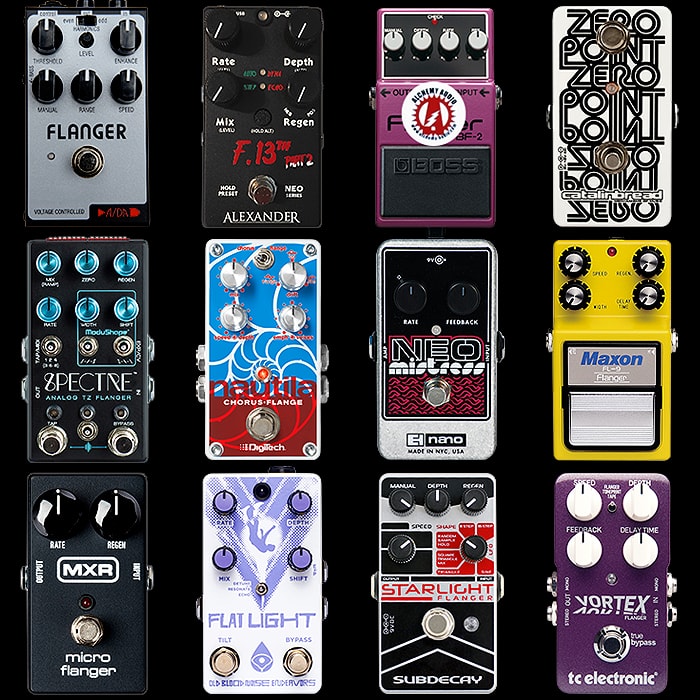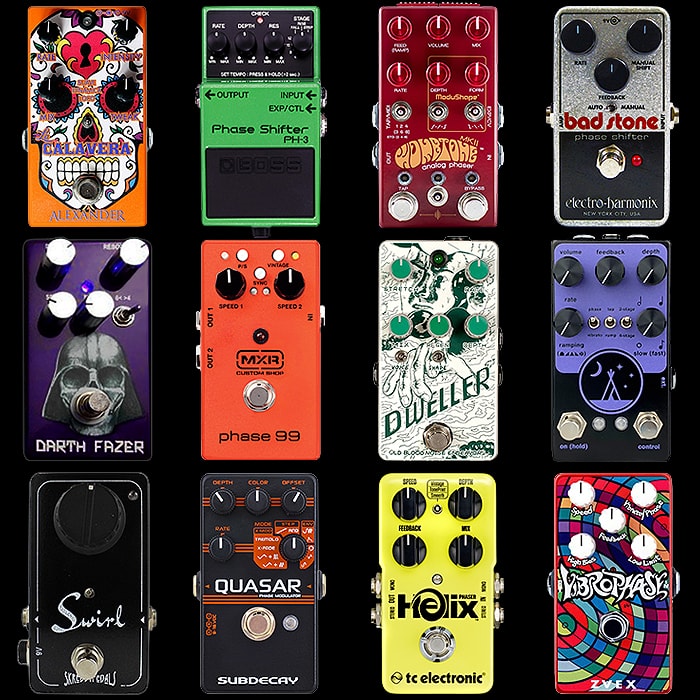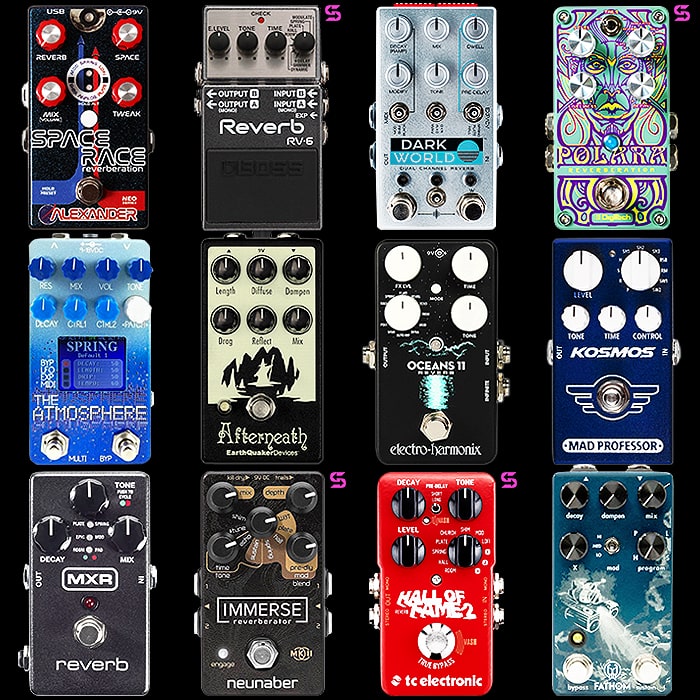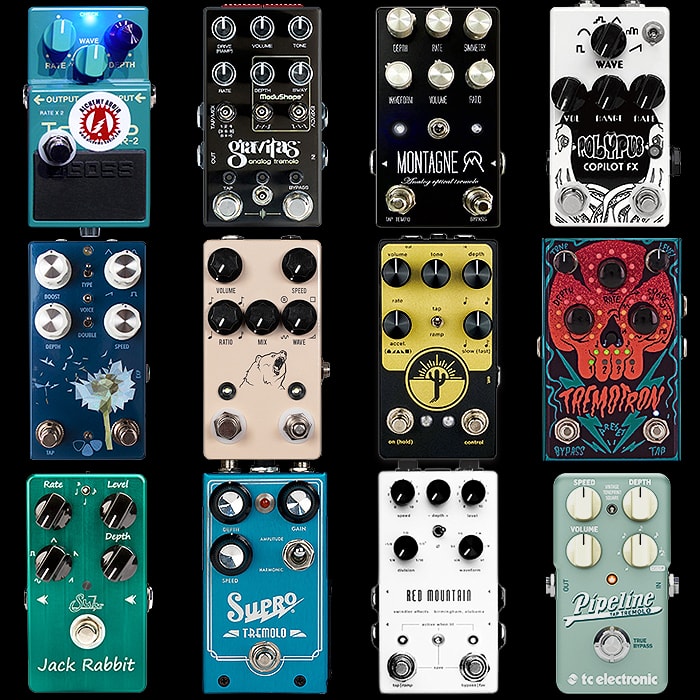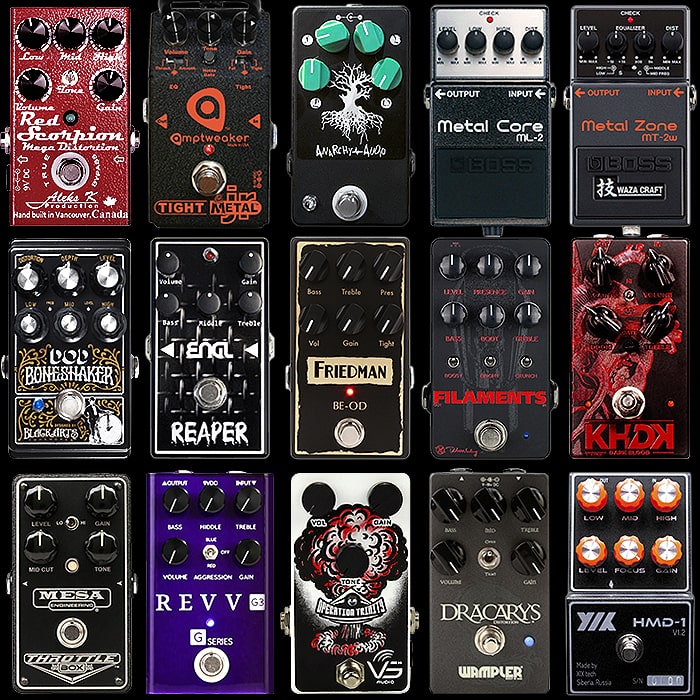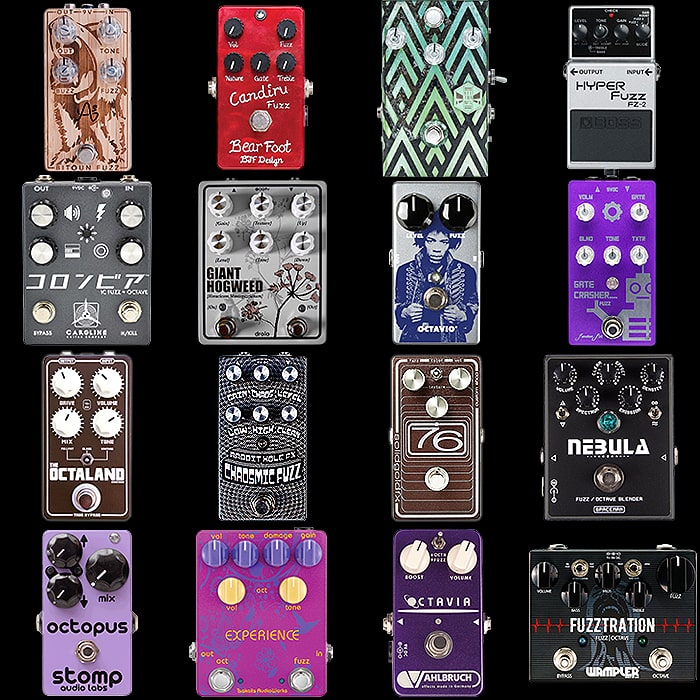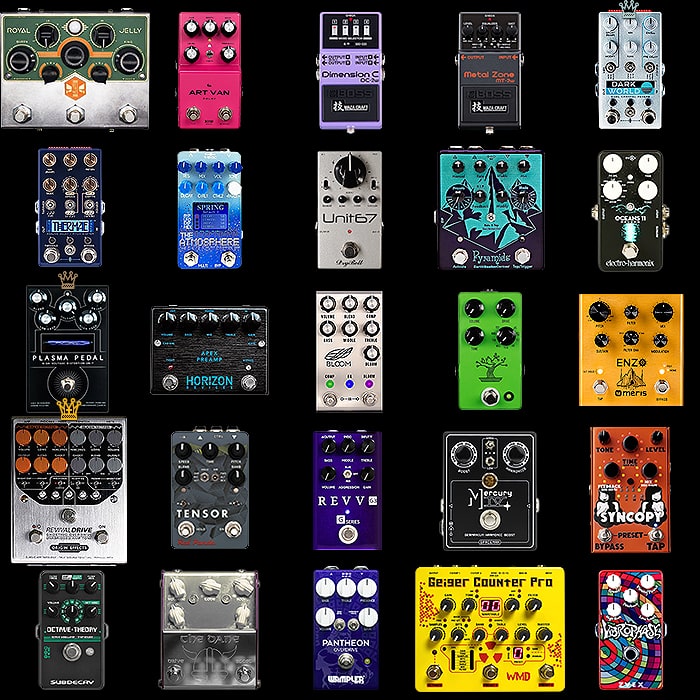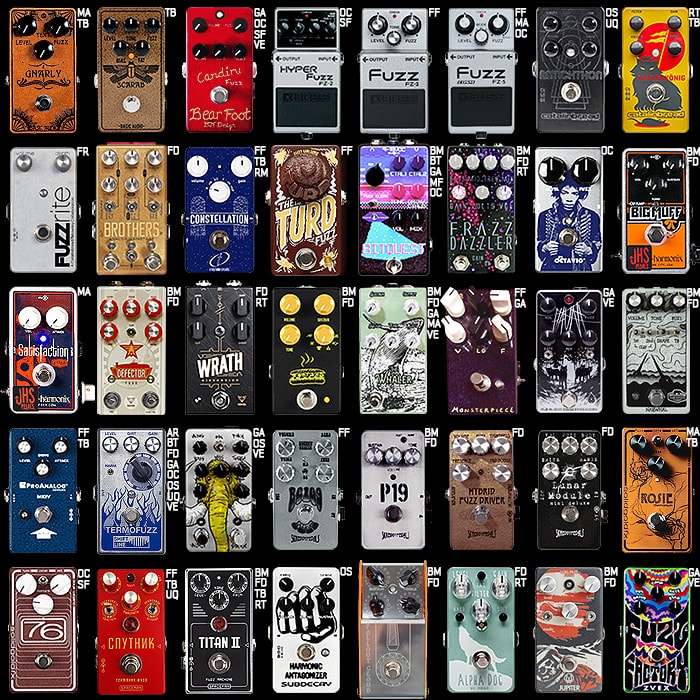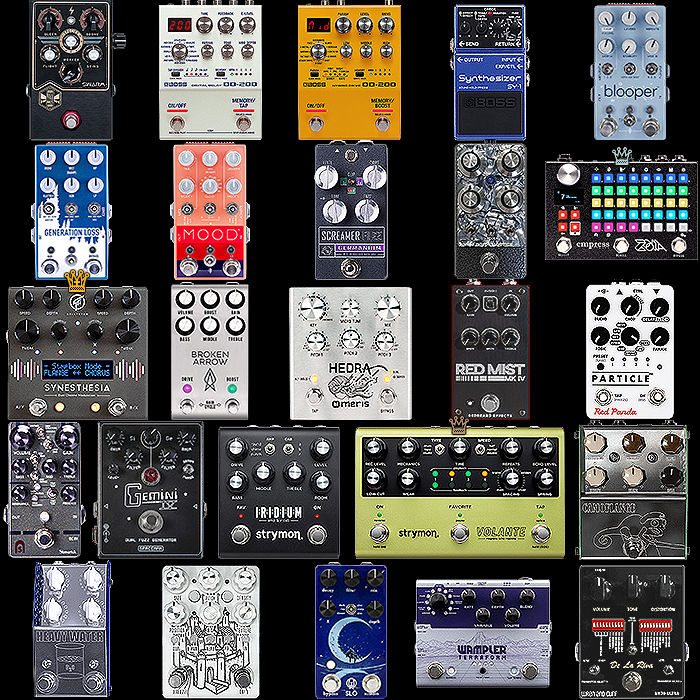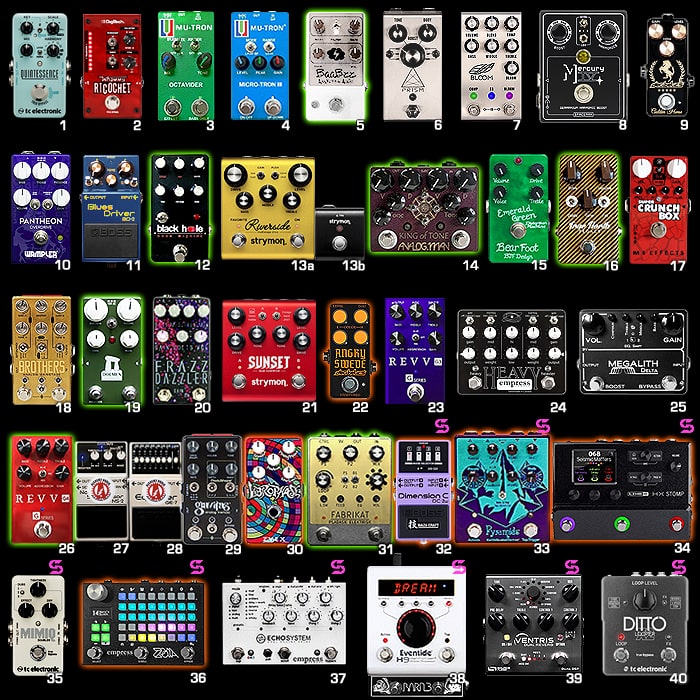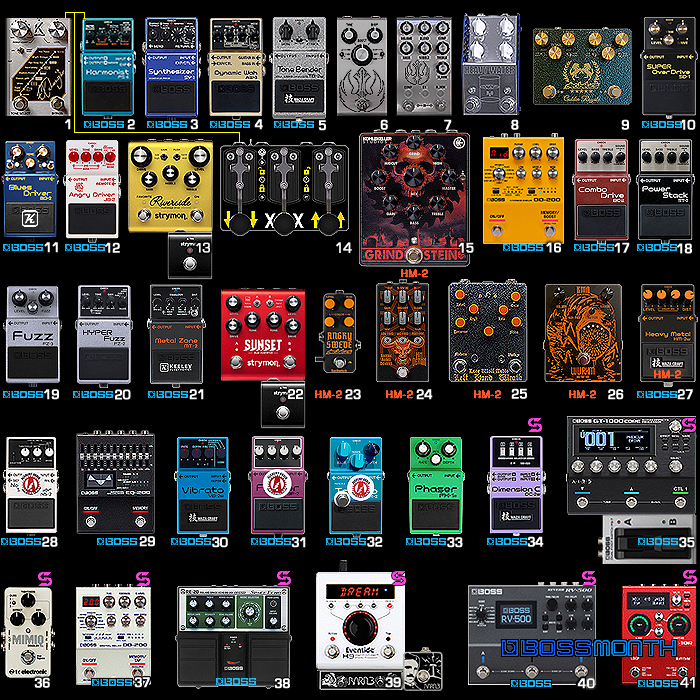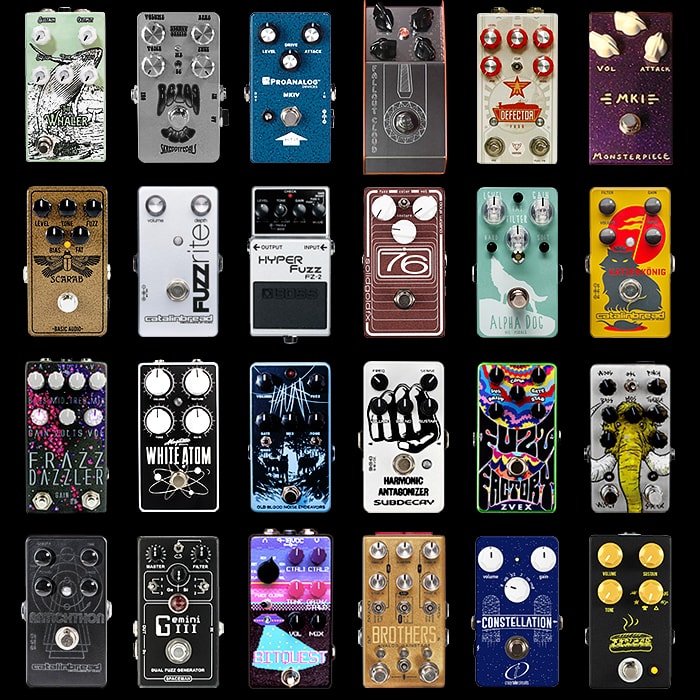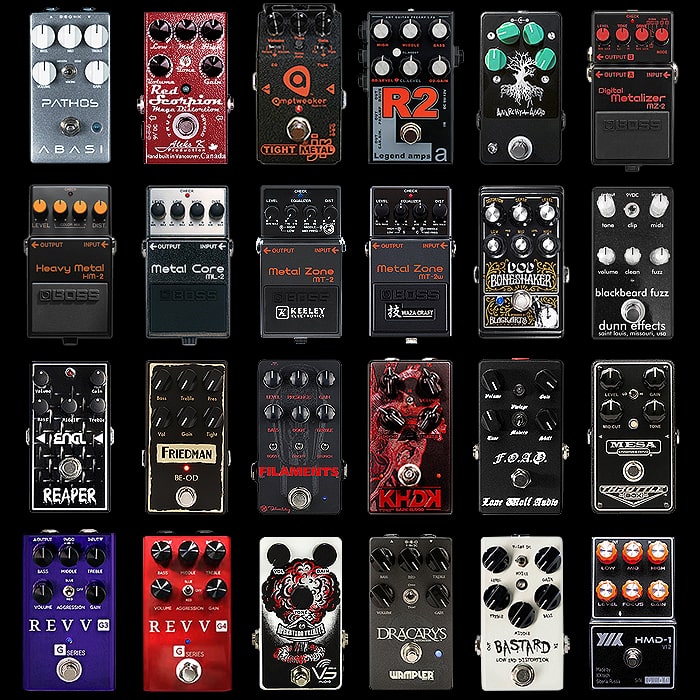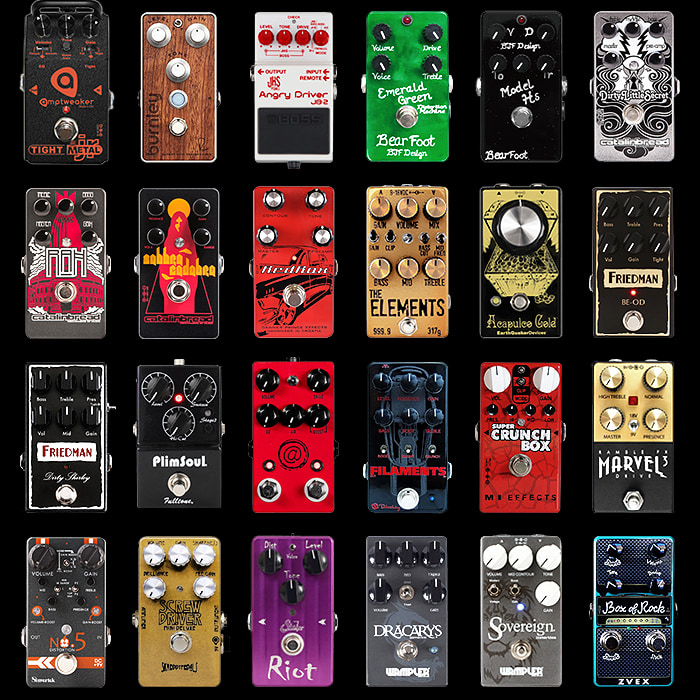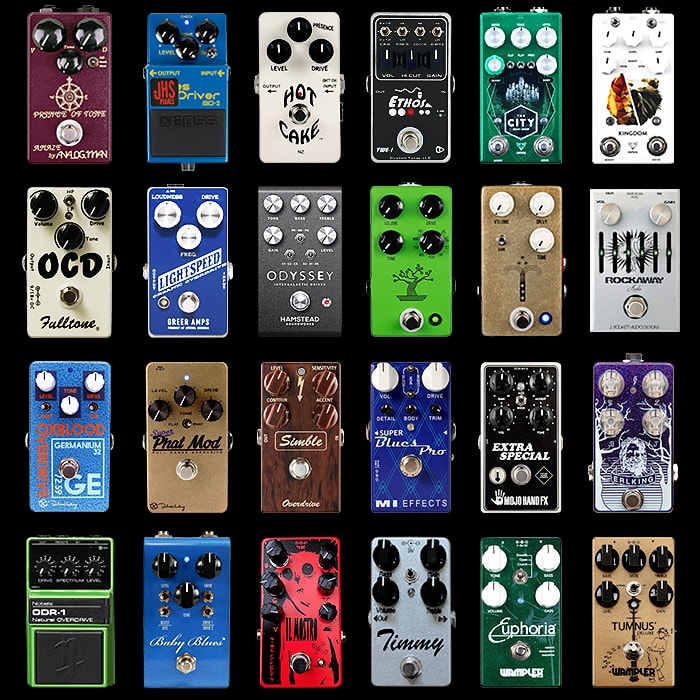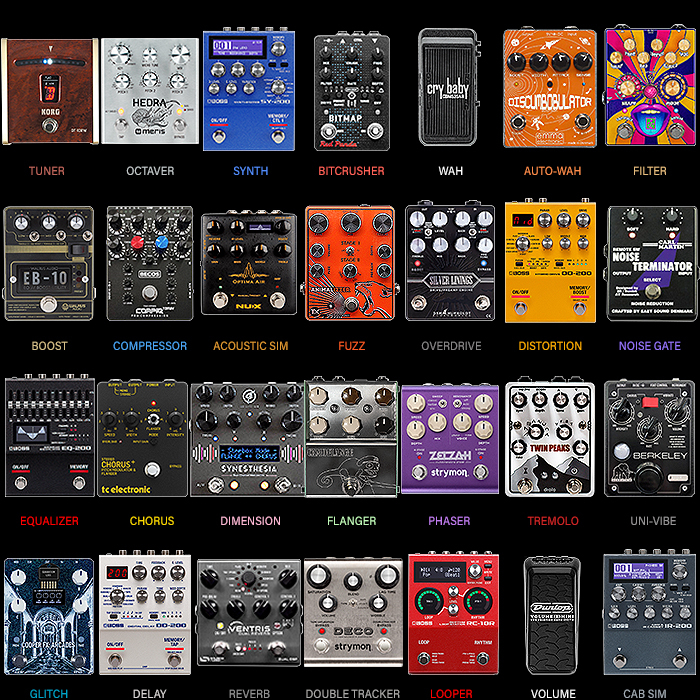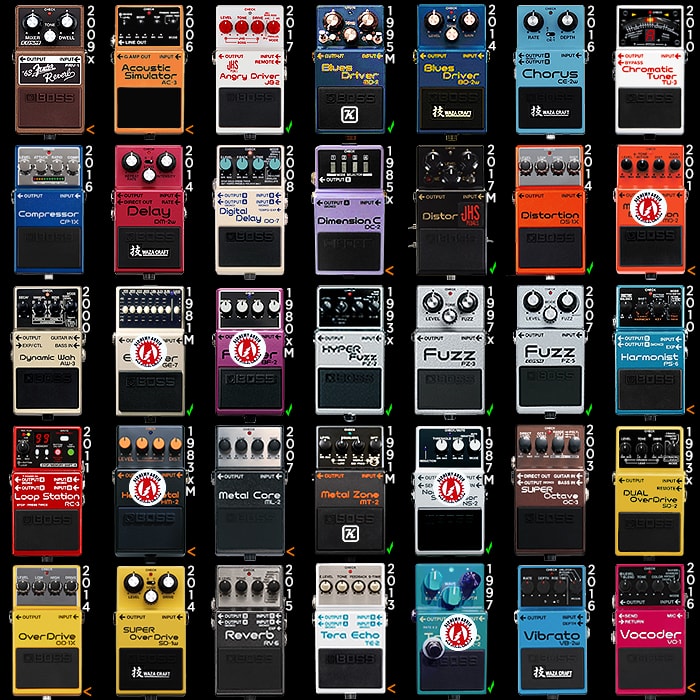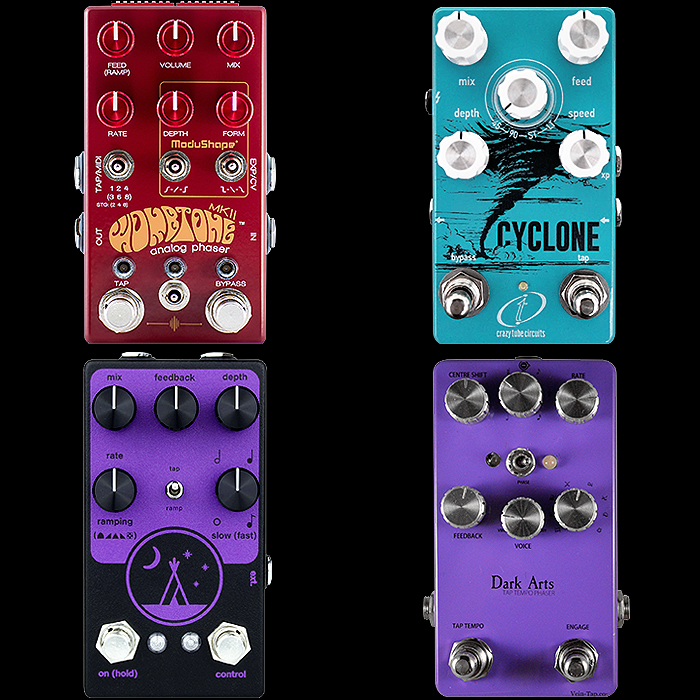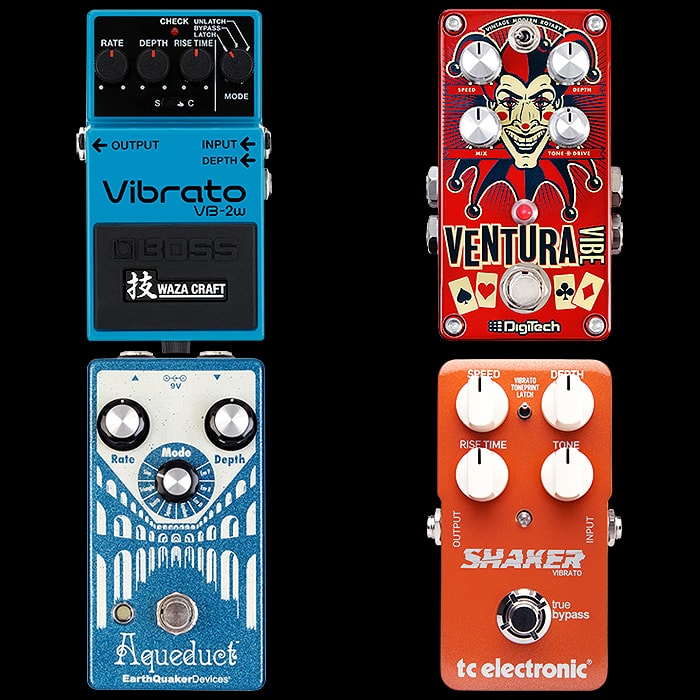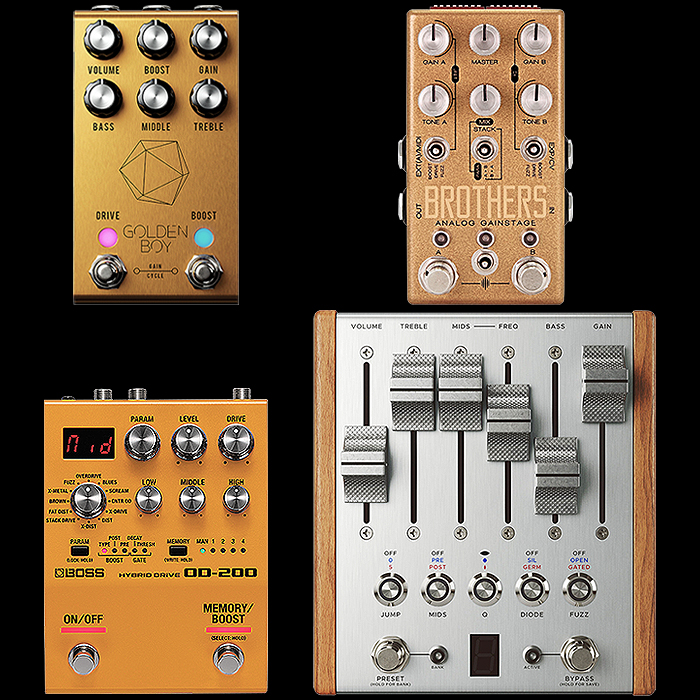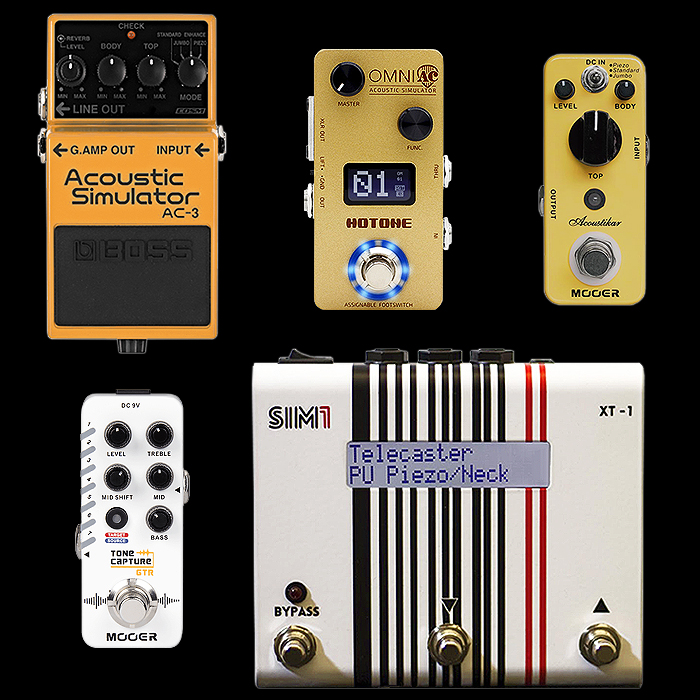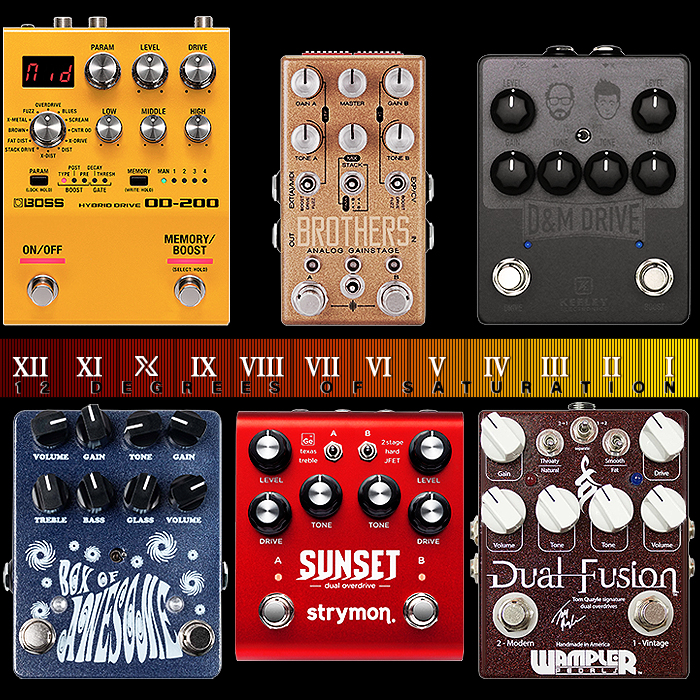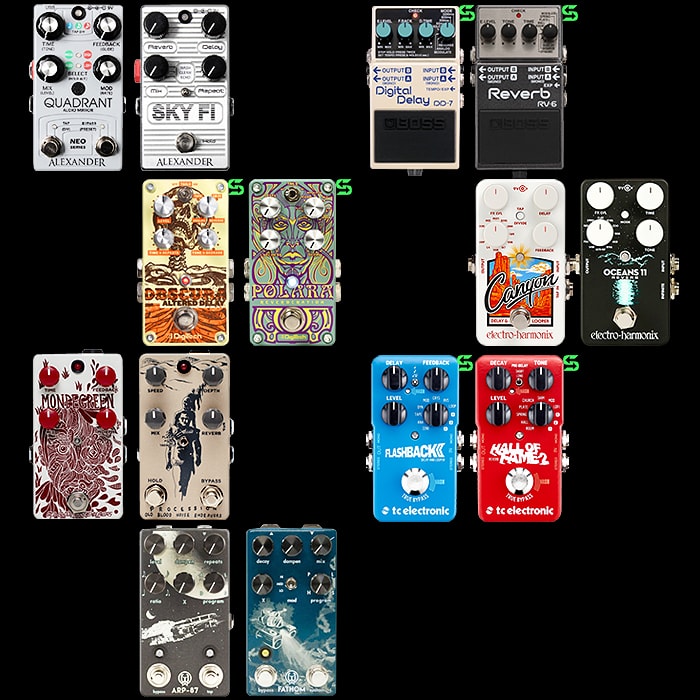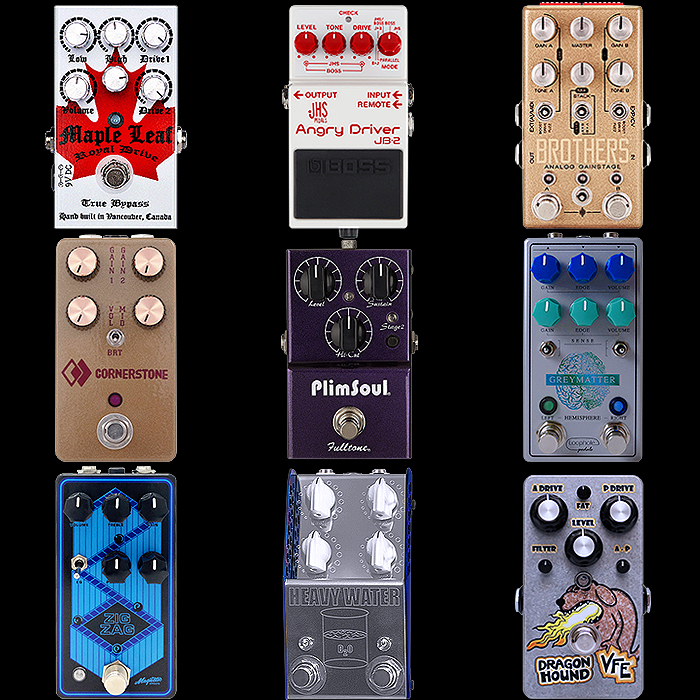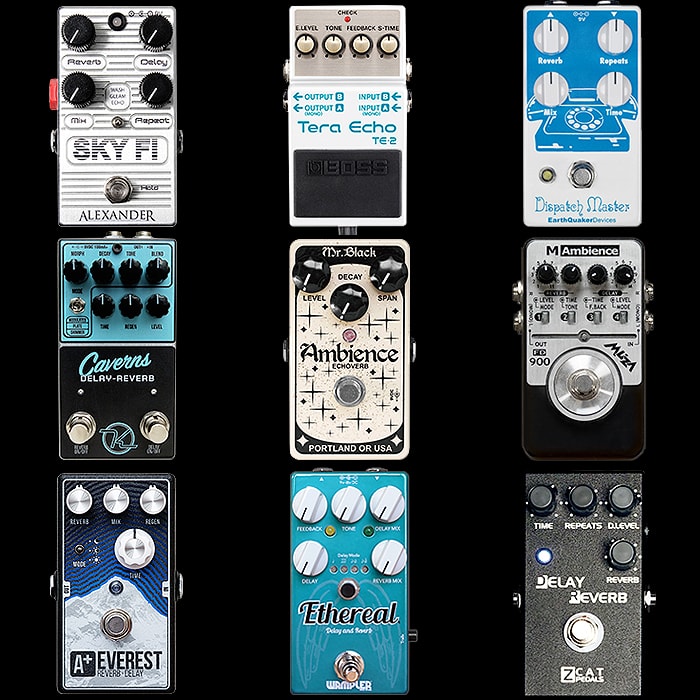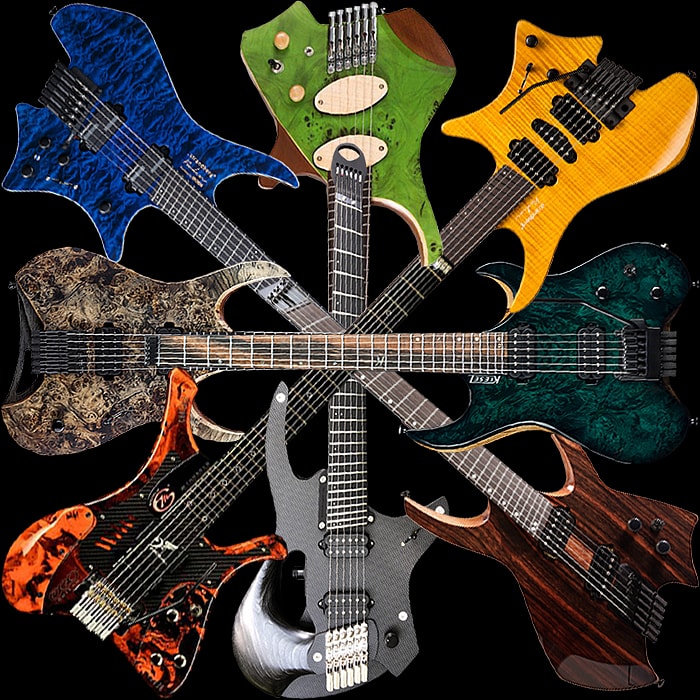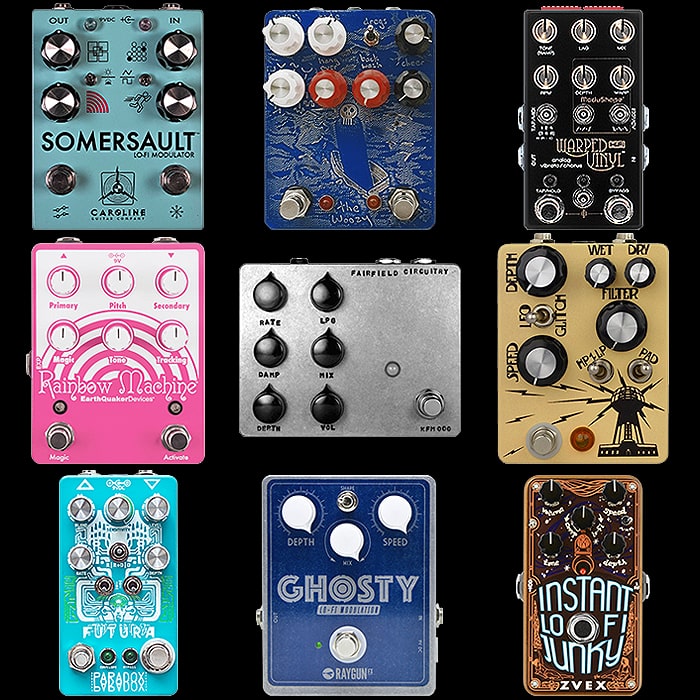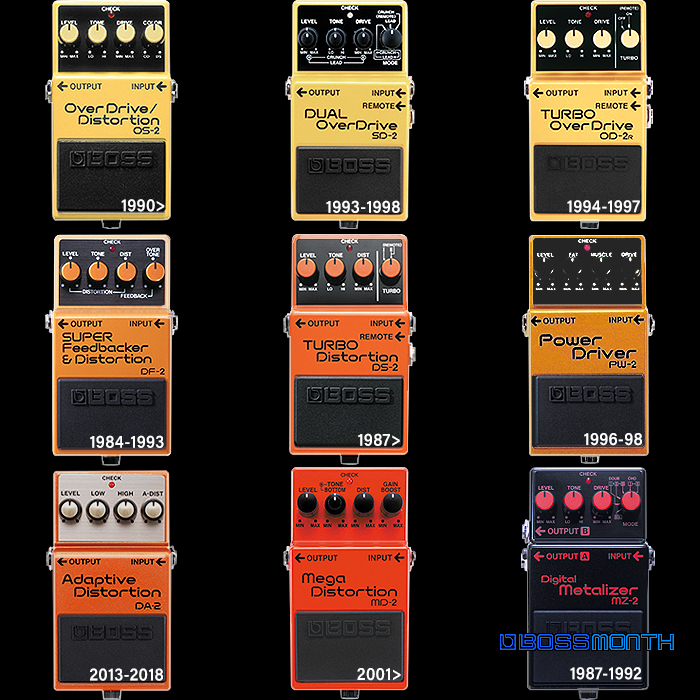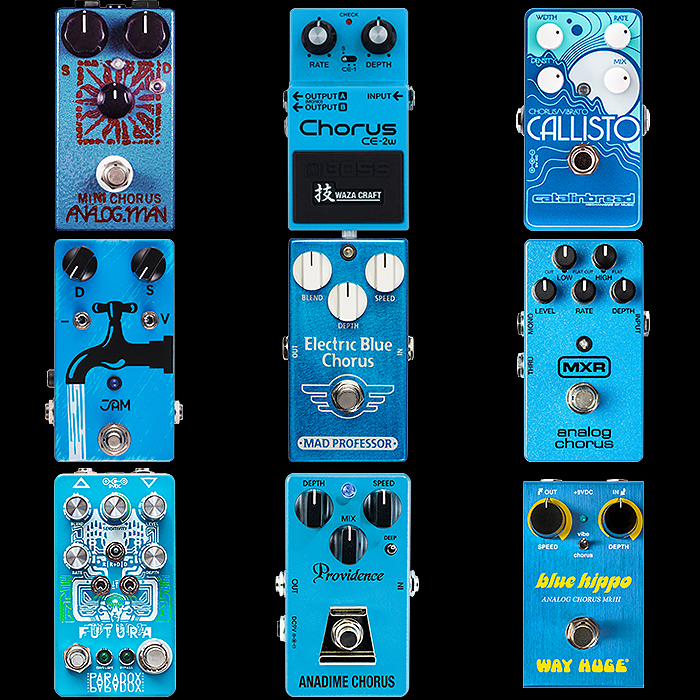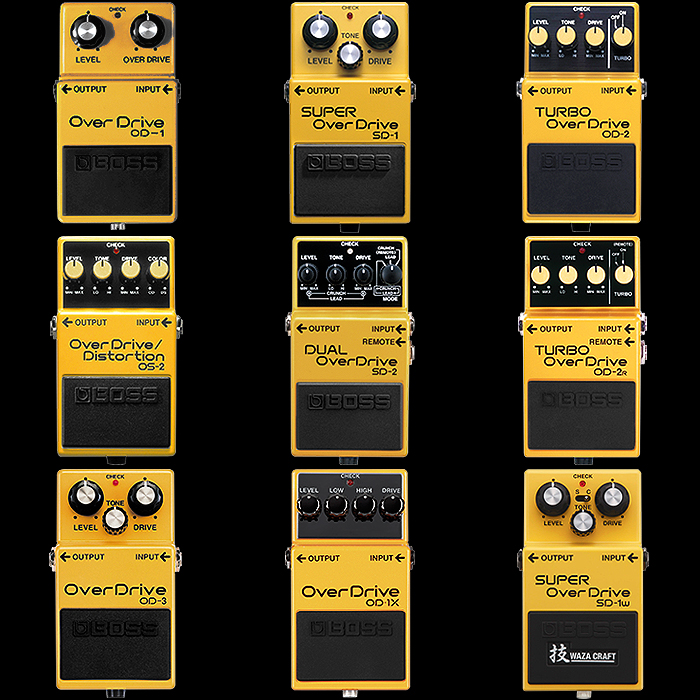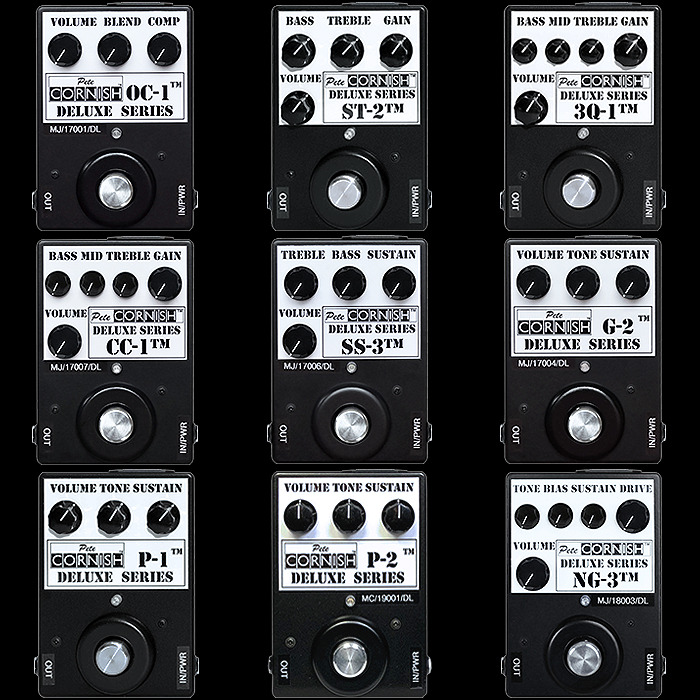Boss Launches 4 New Workstation Pedals in Brand New Dual Footswitch Medium Vertical 200 Series Enclosures
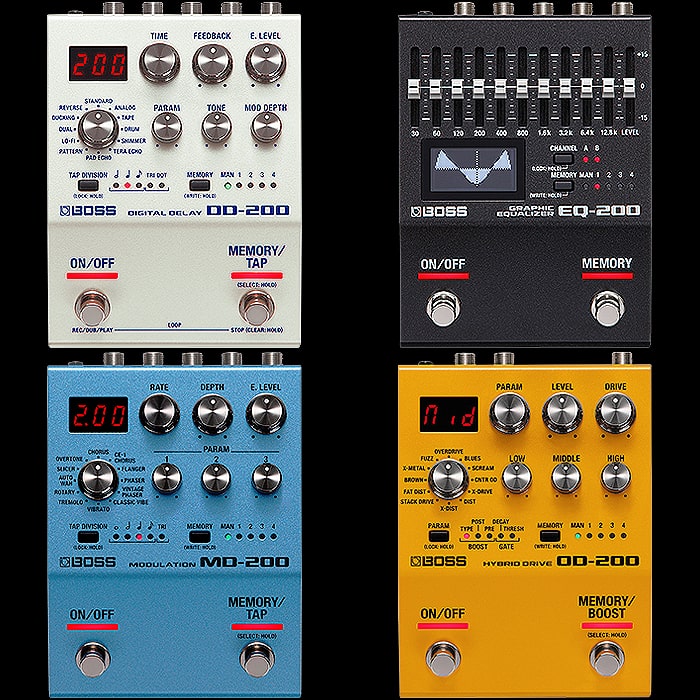
In line with its ongoing enclosure format innovations and taking significant influence from the recent 500 series - Boss replaces the dual latching-plate format of its 20 Series Twin Pedal line with a much more compact and sleeker medium vertical enclosure 200 Series Design - with 4 pedals due to launch in September, and all priced at £219 as of the moment:
- DD-200 12 Mode Digital Delay Stereo Workstation - £219
- EQ-200 10 Band Dual Channel Stereo Graphic Equalizer - £219
- MD-200 12 Mode Modulation Stereo Workstation - £219
- OD-200 12 Mode Hybrid Drive Workstation - £219
Both the 12 Mode DD-200 and MD-200 mostly take after their larger 500 series siblings, but they don’t have exactly the same modes - and obviously don’t have the fully variable dual simultaneous effects feature, nor as many parameter and settings controls.
Boss DD-200 Digital Delay
For the DD-200 vs DD-500 (Modes alphabetical)
- DD-200 | DD-500
- Analog | Analog
- Drum | Filter
- Ducking | SFX
- Dual | Dual
- Lo-Fi | Slow Attack
- Pad Echo | Vintage Digital
- Pattern | Pattern
- Reverse | Reverse
- Shimmer | Shimmer
- Standard | Standard
- Tape | Tape
- Tera Echo | Tera Echo
So the DD-200 has Drum, Ducking, Lo-Fi and Pad Echo, where the DD-500 has Filter, SFX, Slow Attack and Vintage Digital. All the obvious ones are covered - I'm not sure most players would miss any of the specific DD-500 modes. I have the MD-500 and RV-500 and often thought of completing that trifecta, but may be tempted to get the DD-200 instead here - particularly for its Tera Echo mode.
FEATURES :
- Class-leading sound quality with 32-bit AD/DA, 32-bit floating point processing, and 96 kHz sampling rate
- Twelve versatile modes provide a wide range of delay types
- Fast, easy operation with hands-on controls
- Real-time panel setting and four memories for storing favourite sounds
- Phrase looper with up to 60 seconds of recording time
- Panel Lock function disables controls to prevent unwanted changes
- Customizable multi-function footswitches for bypass, tap tempo, memory selection, looper control, and more
- Support for expanded control via external footswitches, an expression pedal, or MIDI
- Full MIDI I/O provided with mini TRS jacks (BMIDI-5-35 adaptor cable available separately)
- Micro USB jack for firmware updates
- Analog dry through and buffered bypass
- Runs on PSA-series AC adaptor or three AA-size batteries
Boss EQ-200 Graphic Equalizer
EQ-200 vs GE-20
The EQ-200 is simply a much more elegant and compact version of its predecessor the GE-20 - with a somewhat different screen display and something called Dual Channel Control - where you have a Channel A and Channel B per preset - for slightly different profiles I assume for Stereo and other scenarios - as you can also change range settings to 3 different varieties - as detailed below.
I'm not sure I need more than my 7-band modded GE-7 - but if I did this would definitely be my first stop-off. It has everything I would want of a Graphic Equalizer really (although perhaps I might want more extended Q controls also!).
FEATURES :
- Class-leading sound quality with 32-bit AD/DA, 32-bit floating point processing, and 96 kHz sampling rate
- Dual 10-band EQs that can be used in stereo, parallel, or series
- Insert function for processing external effects with pre and/or post tone shaping
- Three different range settings: 30 Hz to 12.8 kHz, 32.1 Hz to 16 kHz, and 28 Hz to 14 kHz
- 15 dB boost/cut on each band, plus overall level control for each channel
- Stereo link function for operating both EQ channels together
- Intuitive interface with hands-on sliders and graphic EQ display
- Real-time panel setting and four memories for storing favourite sounds
- Panel Lock function disables controls to prevent unwanted changes
- Two onboard footswitches with customizable assignments
- Support for expanded control via external footswitches, an expression pedal, or MIDI
- Full MIDI I/O provided with mini TRS jacks (BMIDI-5-35 adaptor cable available separately)
- Micro USB jack for firmware updates
- Runs on PSA-series AC adaptor or three AA-size batteries
MD-200 Modulation
For the MD-200 vs MD-500 (Modes alphabetical)
- MD-200 | MD-500
- Auto Wah | Filter
- CE-1 Chorus | Dimension
- Chorus | Chorus
- Classic Vibe | Classic Vibe
- Flanger | Flanger
- Overtone | Overtone
- Phaser | Phaser
- Rotary | Rotary
- Slicer | Slicer
- Tremolo | Tremolo
- Vibrato | Vibrato
- Vintage Phaser | Ring Mod
So the MD-200 has Auto Wah, CE-1 Chorus and Vintage Phaser, where the MD-500 has Dimension, Filter and Ring Mod. The biggest miss here is the enduringly popular Dimension for which I guess Boss did not want to scupper sales of the not too dissimilarly priced and relatively recent DC-2w. I already have the MD-500 - but this is largely a more compact and streamlined version of that - easier to cram in on the pedalboard / pedal-chain - I'm tempted, but it's not a priority!
FEATURES :
- Class-leading sound quality with 32-bit AD/DA, 32-bit floating point processing, and 96 kHz sampling rate
- 12 world-class effects / Modes in single compact pedal
- Direct access to Rate, Depth, and Level plus additional parameters tailored to each effect type
- Rates can also be tapped in with Tap-Tempo Footswitch while performing
- Beat subdivisions are easily set and viewed with dedicated panel controls
- Powerful insert function, where you’re able to patch in drive pedals and other effects for selectable pre/post mod processing
- Real-time panel setting and four memories for storing favourite sounds
- Panel Lock function disables controls to prevent unwanted changes
- Two onboard footswitches with customizable assignments
- Support for expanded control via external footswitches, an expression pedal, or MIDI
- Full MIDI I/O provided with mini TRS jacks (BMIDI-5-35 adaptor cable available separately)
- Micro USB jack for firmware updates
- Runs on PSA-series AC adaptor or three AA-size batteries
OD-200 Hybrid Drive
OD-200 vs OD-20 (Modes alphabetical)
For the OD-200 we can compare it with its predecessor the OD-20 - although they are quite different pedals in many ways really:
- OD-200 | OD-20
- Blues | *DS-1/BD-2
- Brown | Guv DS/P-Rat
- CNTR OD | DST+/Centa OD
- Dist | *DS-1/BD-2
- Fat Dist | Lead/Boost
- Fuzz | Face/Oct Fuzz
- Overdrive | OD-1/OD-2
- Scream | T-Scream/Full-D
- Stack Drive | Stack/Crunch
- X-Dist | Loud/Metal
- X-Drive | R-Man/Muff Fuzz
- X-Metal | MT-2/HM-2
The OD-20 is very much a greatest hits of Boss dirt pedals - with specific model number references, alongside Marshall Guv'nor, ProCo Rat, MXR Distortion+, Klon Centaur, Fulltone Full-Drive 2, Rockman and Big Muff flavours. While the OD-200 is really much more generically based - and has 12 modes versus the 22 dual modes of the predecessor. The only retained 'named' mode is the Klon Centaur - variously named CNTR OD and Centa OD here.
The OD-200 also has 3-Band EQ, and a Param dial rather than just Tone, Attack Shape and Heavy Octave controls per the OD-20. Will be interesting to see what all the Parameters available per mode will be - I assume Fuzz Params would include Octave, Muff etc.! Obviously none of the manuals or extended guides are out yet so we don't exactly know what we're dealing with here - but Boss bills this as 'hybrid analog/digital circuitry' so I can only presume it's something similar to what Strymon did for its Riverside and Sunset drive pedals - where it used a mix of JFET circuitry and DSP to get those warm amp-like tones. This is weirdly the one pedal here that I am the most excited about - strange what takes ones fancy!
FEATURES :
- Class-leading sound quality with 32-bit AD/DA, 32-bit floating point processing, and 96 kHz sampling rate
- 12 Unique Modes
- Hybrid Analog/Digital Circuitry
- Three-band EQ
- Powerful Pre and Post Boosts for ultra-detailed gain shaping
- Advanced Noise Gate circuit onboard, ideal for both eliminating noise and adding tightness and aggression to high-gain drive tone
- Real-time panel setting and four memories for storing favourite sounds
- Panel Lock function disables controls to prevent unwanted changes
- Two onboard footswitches with customizable assignments
- Support for expanded control via external footswitches, an expression pedal, or MIDI
- Full MIDI I/O provided with mini TRS jacks (BMIDI-5-35 adaptor cable available separately)
- Micro USB jack for firmware updates
- Runs on PSA-series AC adaptor or three AA-size batteries
Final Thoughts
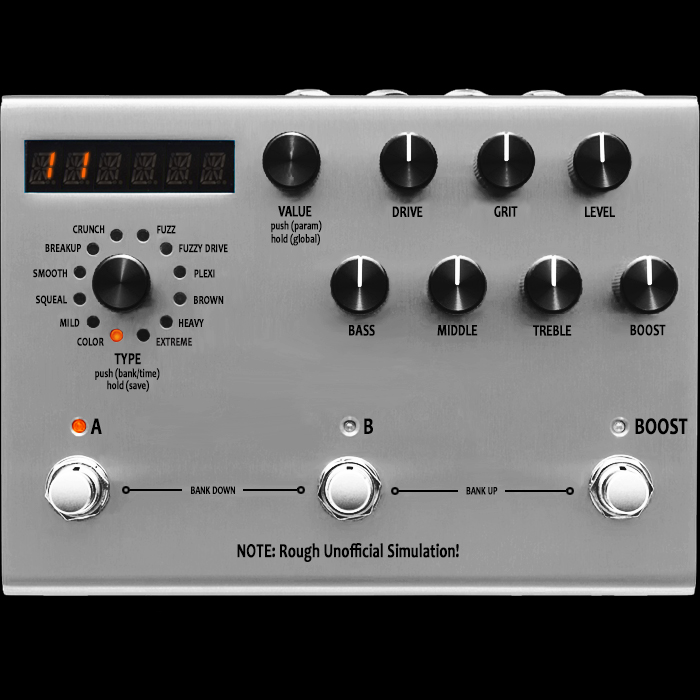
Boss is still very much back on its game now with a whole series of big successful releases - both Pedal and Amp-wise and with related technologies too - like the WAZA Tube Amp Expander and ever-expanding wireless line. You will know by now that I'm already a huge Boss fan - with Boss having the honour of most pedals in my Tone Library - albeit only 3 on active duty in the current pedal-chain - the Keeley Modded BD-2, and the very utilitarian NS-2 and GE-7 pedals also both in modded editions (Alchemy Audio).
I was/am a big fan of the 500 series and have had both the MD-500 and RV-500 on primary/principal duties in the chain - although both are out of rotation currently. As I said above - it was always my intention to get the DD-500 to round-off that particular trifecta. But I'm thinking right now that I may satisfy myself with the DD-200 instead - as a sometime rotation on actually the Glitch slot - or Slot #34 which is currently mostly occupied by the Red Panda Particle V2.
For the EQ-200 I am still not convinced in need more than the 7 band of my GE-7 - the EQ-200 obviously replaces Boss's previous EQ-20 10-Band EQ in a much more compact and formidable package. It is of course stereo enabled - so I would need to move the EQ further back in the chain - but I will put it on the back-burner for now. I've not entirely dismissed it, it's just not something that particularly grabs my attentions or fulfils a particular gap right now.
As mentioned, I already have the MD-500 - but am still nonetheless tempted by the MD-200 - it's not quite so powerful, but its compact nature allows me to slot it into the chain more easily in different positions - and while the Empress Zoia is now in effect the main Digital Modulation pedal for the chain - it's alway useful to have options and alternatives. The big miss for the MD-200 is the Dimension Mode - which I already have on my MD-500, and moreover am soon to be acquiring the very anlog DC-2w for sometime rotation on both Slot #29 and #34 - depending on whether I wish to use it in stereo!
And then onto the last but certainly not least - OD-200 which I am strangely the most excited about for some reason. I did a Strymon Drive Workstation mockup quite a while ago - per the above, and this is the closest to meeting those requirements. Of course I need to know exactly what generates the tone here - but it has to be some sort of hybrid JFET with digital processing on top - I can't see what else would make sense here. I am fascinated how close it can get to Boss's own flagship pedals and then the degree of overall versatility and the ability in particularly to generate Harmonics and other Distortion artefacts which make analog drives such a pleasure to use.
I've yet to find an entirely satisfactory DSP Drive approach - but the Strymon style hybrid of JFET plus DSP comes very close to the real thing - so it will be interesting to see what Boss has done to bring that format forward.
These aren't due for public release until some time in September and we've only seen a couple of very rough demos so far - with no deep-dive into the more extended feature set. I will very likely acquire the OD-200 first - just for experimentation and benchmarking as much as anything, and then the DD-200, with the MD-200 a future maybe!
I feel Boss keep hitting the home runs with these - and I'm glad that the button quality here seems to be superior than the slightly too plasticky knobs of the 500s!
NOTE - demo videos will be added and updated here as and when they materialise!



















